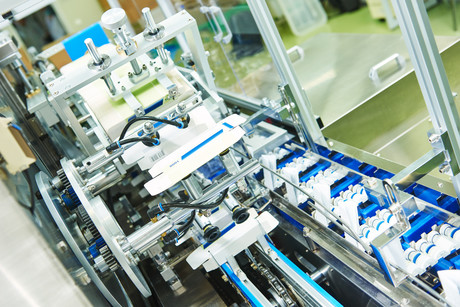Industry 4.0 — the fourth revolution

Industry 4.0 (the ‘fourth industrial revolution’) refers to the current trend towards improved automation, machine-to-machine and human-to-machine communication, artificial intelligence, continued technological improvements and digitalisation in manufacturing. As such it builds on the digital revolution, representing new ways for technology to become embedded within societies — and even the human body. The fourth industrial revolution is marked by emerging technology breakthroughs in a number of fields, including robotics, artificial intelligence, nanotechnology, biotechnology, the Internet of Things, 3D printing and autonomous vehicles.
This trend is enabled by four key drivers: rising data volumes, computational power and connectivity; the emergence of analytics and business-intelligence capabilities; new forms of human-machine interaction, such as touch interfaces and augmented-reality systems; and improvements in transferring digital instructions to the physical world, such as robotics and 3D printing.
Industry 4.0 is now a globally accepted reality that is affecting almost every industry across the world and is rapidly transforming how businesses operate. But what does this buzzword actually mean? For a better understanding it is worth examining the three preceding industrial revolutions, as they also brought fundamental changes to manufacturing processes.
In the middle of the 19th century, thermal engines made it possible to supply large factories with energy at any location. Starting in Great Britain, this fuelled a massive change in the industrial landscape from small workshops to huge factories — the first industrial revolution, which can be defined as mechanisation.
The second industrial revolution began in the early 20th century in the USA. Conveyor belts led to a considerable increase in productivity and made products that were previously reserved for very few people accessible to a mass market. The Ford Model T is of course one of the most famous examples of this development which established mass production.
From the middle of the 1970s, the increasing use of microelectronics and computers, coupled with CNC control systems, resulted in a significant increase in automation in production, which today is referred to as the third industrial revolution. It was then possible to automate flexible manufacturing processes.
The computerisation of production has advanced in leaps and bounds in recent years. Ever more complex manufacturing steps can be automated, therefore, permanently increasing productivity. This is also reflected in customer demand. The desire for individualised products is becoming ever greater — for example, consumers do not just want completely individual automobiles, they also want muesli and shampoo to be individualised according to their own specific taste. In addition, we are seeing a significant shortening of product life cycles. All these trends have a huge effect on automation technology. Systems must be able to manufacture small batch sizes with greater productivity; the conversion of a production system to a new product range is becoming more frequent; value chains between different producers are becoming more complex and therefore more prone to faults; and it is essential to avoid downtimes.
It is apparent that efficient solutions involving increased networking and intelligence of the systems will need to be found in order to deal with the increasing complexity associated with these demands. This is referred to as the fourth industrial revolution — the Internet of Things. The classic automation pyramid in which data from the field level passes through various levels up to the control level and is then gradually aggregated is breaking down. Instead, the data is available on all levels and can pass directly to a private or public cloud.
It will no doubt take a number of years before Industry 4.0 has become fully established and a huge amount of work will be required beforehand, especially with regard to standardisation.
One key factor for its implementation is the availability of data. For a sensor system manufacturer such as Leuze electronic, most of the data is generated in our products. However, simple sensors usually provide the user with only a fraction of this information.
The IO-Link interface, however, creates a first step toward Industry 4.0. Process, configuration and diagnostic data becomes available and can be exchanged with the control system. To achieve true Industry 4.0 implementation, however, data does not only need to be made available in the control system but has to be available at every level — even all the way up to the cloud. An IO-Link field master device can be used for devices without the appropriate interface. Via its fieldbus interface, the field master transfers the data to the control system either via Profinet or EtherNet/IP. At the same time, however, the data is also transferred via a web server and is available for other purposes such as diagnostics — an important step today toward tomorrow’s Industry 4.0.
Liberating stranded data via the IIoT
Modern edge-to-cloud IIoT solutions can make it easier to access and use stranded data.
How the IIoT can fast-track Australia's sovereign manufacturing capability
The primary benefit of using automation to enhance sovereign capability is increased productivity...
EtherCAT: leveraging industrial Ethernet for 20 years
EtherCAT is the only industrial fieldbus that leverages Ethernet for both high speed and...














